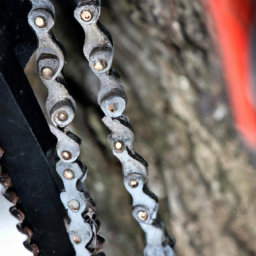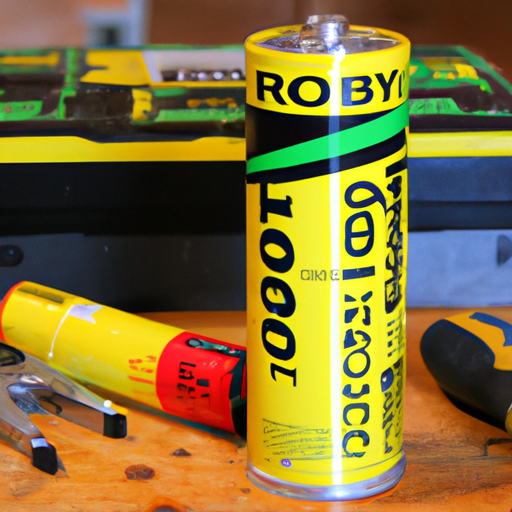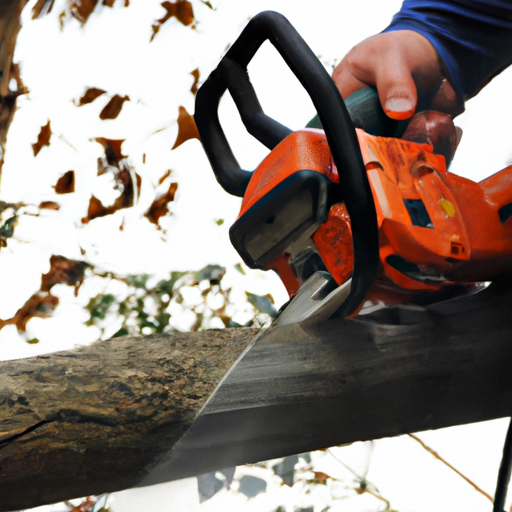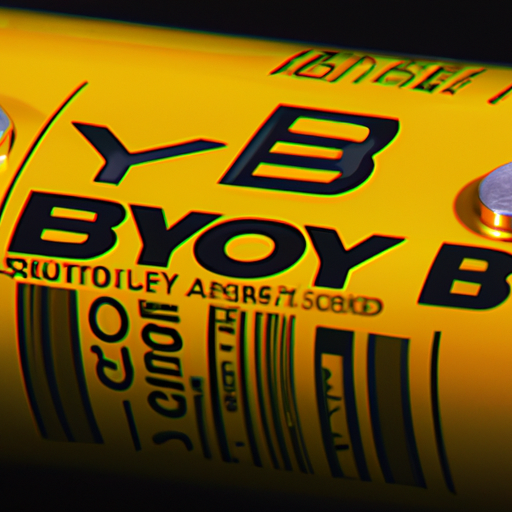Have you ever climbed up a ladder with your pole saw to trim those hard-to-reach branches, only to find that your chain is not up to the task? Choosing the right pole saw chain may seem like a small detail, but it can make a world of difference in the efficiency and effectiveness of your pruning projects. In this article, we will explore the importance of selecting the proper pole saw chain and how it can ensure smooth and precise cutting, saving you both time and effort. Whether you are a professional arborist or a DIY enthusiast, understanding the significance of this seemingly minor component can revolutionize your tree trimming experience.
1. Understanding Pole Saw Chains
Pole saw chains are an essential component of pole saws, which are widely used for trimming and pruning trees. These chains play a crucial role in ensuring the efficiency and safety of your cutting tasks. Understanding the different types of pole saw chains, their components, and chain pitch and gauge can help you make an informed decision when selecting the right chain for your needs.
1.1 Types of Pole Saw Chains
There are various types of pole saw chains available in the market, each designed for specific cutting applications. Common types include full chisel chains, semi-chisel chains, and low-profile chains. Full chisel chains are known for their aggressive cutting performance and are suitable for heavy-duty tasks. Semi-chisel chains are more versatile, providing a balance between cutting speed and durability. Low-profile chains are preferable for light-duty cutting applications.
1.2 Components of a Pole Saw Chain
To understand the functioning of a pole saw chain, it is crucial to familiarize yourself with its components. The chain consists of drive links, cutting links, tie straps, and depth gauge links. Drive links engage with the sprocket, while cutting links have sharp edges for cutting through wood. Tie straps connect the drive and cutting links, providing stability and strength to the chain. Depth gauge links control the depth of the cut, ensuring optimal performance.
1.3 Chain Pitch and Gauge
Chain pitch refers to the distance between three consecutive drive links divided by two. It determines the compatibility of the chain with the bar and sprocket of your pole saw. Choosing the correct chain pitch is crucial to ensure smooth operation and prevent damage to your equipment. Chain gauge, on the other hand, refers to the thickness of the drive link. It determines how snugly the chain fits the bar groove. Selecting the right chain gauge is vital for optimal cutting performance and safety.
2. Ensuring Safety and Efficiency
Safety and efficiency are paramount when using a pole saw. Choosing the right pole saw chain can significantly contribute to both aspects of your cutting experience.
2.1 Reduced Kickback
Kickback is a common safety concern when using pole saws. It occurs when the chain’s upper portion suddenly contacts an object, causing the saw to jerk back towards the operator. Selecting a chain with reduced kickback characteristics can minimize the risk of accidents and injuries. Many modern pole saw chains incorporate safety features such as low kickback design and anti-kickback bumpers, providing a safer cutting experience for users.
2.2 Smooth Cutting Experience
The type and condition of your pole saw chain can greatly impact the smoothness of the cutting process. Choosing a chain that matches your cutting needs and preferences can ensure a smooth and effortless cutting experience. Factors such as low vibration design, sharp cutting edges, and proper tension contribute to the overall smoothness of the cut. A well-maintained and properly fitted chain can enhance your efficiency and make your cutting tasks more enjoyable.
2.3 Improved Control and Precision
Having control over your pole saw during cutting operations is crucial for precision and safety. The right pole saw chain can offer improved control, allowing you to guide the saw with ease and precision. Chains with low kickback tendencies, balanced design, and reliable grip can help you maintain control over the saw, reducing the chances of mishaps. Enhanced control leads to precise cuts, ensuring that you achieve your desired results while minimizing the risks associated with using a pole saw.
3. Enhancing Cutting Performance
A pole saw’s cutting performance depends heavily on the quality and compatibility of its chain. By focusing on specific aspects related to cutting performance, you can select a chain that complements your cutting needs.
3.1 Cutting Speed and Power
Cutting speed and power are vital factors to consider when choosing a pole saw chain. Different types of chains offer varying cutting speeds, allowing you to choose between faster cutting and more deliberate, controlled cutting. The power of the chain is determined by its design and construction, with some chains offering higher power for demanding cutting tasks. Considering the nature of your cutting applications can help determine the appropriate chain that provides the ideal balance between speed and power.
3.2 Optimal Chain Tension
Maintaining the proper tension in your pole saw chain is crucial for consistent cutting performance. An overly tight chain can strain the engine and bar, leading to reduced efficiency and potential damage to the saw. Conversely, a loose chain can increase the risk of kickback and decrease cutting performance. Choosing a chain that is compatible with your pole saw and ensuring proper tension adjustment can significantly enhance cutting efficiency and prolong the lifespan of your equipment.
3.3 Resistance to Wear and Tear
Pole saw chains are subjected to significant wear and tear during cutting operations. Choosing a chain that offers resistance to wear can help prolong its lifespan and minimize the need for frequent replacements. Chains with durable materials, hardened cutting edges, and anti-corrosion coatings offer better resistance to wear and ensure consistent cutting performance throughout the chain’s lifespan. Prioritizing durability and resistance to wear when selecting a chain can help save both time and money in the long run.
4. Factors to Consider in Choosing the Right Pole Saw Chain
Several factors should be taken into account when selecting the appropriate pole saw chain for your specific needs.
4.1 Tree Species and Wood Density
Different tree species and wood densities require specific types of chains to optimize cutting performance. Hardwood trees, such as oak or maple, are denser and require chains with greater cutting power and durability. Softwood trees, such as pine or spruce, are less dense and can be efficiently cut with chains designed for lighter applications. Considering the type of trees you frequently encounter will help you choose a chain that is best suited for the cutting tasks you perform.
4.2 Desired Cutting Applications
Your intended cutting applications should also guide your choice of pole saw chain. If you primarily perform heavy-duty pruning and trimming, a chain that offers high cutting power and durability is essential. However, if you commonly engage in light-duty tasks, selecting a chain that provides smooth cutting and maneuverability may be more important. Identifying your specific cutting applications will enable you to select a chain that meets your requirements and supports efficient cutting performance.
4.3 Pole Saw Compatibility
Not all pole saw chains are compatible with all pole saw models. It is crucial to ensure that the chain you choose is specifically designed for your pole saw’s make and model. Refer to your equipment’s user manual or consult with a professional to determine the appropriate chain specifications for your pole saw. Choosing a compatible chain will guarantee optimal performance, safety, and longevity for your pole saw.
5. Lengthening the Lifespan of Your Pole Saw Chain
Proper maintenance and care are essential for extending the lifespan of your pole saw chain. By following a few simple practices, you can ensure that your chain operates at its best for longer periods.
5.1 Proper Chain Lubrication
Lubrication is crucial for reducing friction and heat buildup during cutting operations. Applying an appropriate lubricant to your chain regularly will help keep it running smoothly and extend its lifespan. Use chain oil or a lubricant recommended by the manufacturer to ensure optimal performance and prevent premature chain wear. Additionally, it is vital to check the oil levels in your pole saw regularly to ensure consistent lubrication.
5.2 Correct Chain Sharpening
Maintaining a sharp cutting edge is essential for efficient cutting performance. Regularly sharpening your pole saw chain will ensure clean cuts and reduce the strain on your equipment. Follow the manufacturer’s guidelines on chain sharpening techniques and use the appropriate tools for the task. Proper sharpening will not only enhance cutting efficiency but also prevent accidents caused by dull chains.
5.3 Regular Maintenance and Inspection
Performing regular maintenance and inspections on your pole saw chain can help identify issues before they become major problems. Check for any signs of damage or wear, such as broken or loose drive links, bent cutting teeth, or excessive chain stretch. Cleaning the chain after each use and removing any debris or sap buildup is also important. By conducting routine maintenance and inspections, you can address any issues promptly and ensure the longevity and optimal performance of your pole saw chain.
6. Ensuring Your Safety while Using a Pole Saw
Safety should always be a top priority when operating a pole saw. By following proper safety guidelines and techniques, you can minimize the risks associated with using this powerful tool.
6.1 Wearing Protective Gear
Before starting any cutting operations, ensure that you are properly dressed to protect yourself from potential hazards. Wear safety goggles to shield your eyes from flying debris and a hard hat to protect your head from falling branches. Use ear protection to reduce the impact of noise generated by the pole saw, and wear sturdy gloves to improve your grip and protect your hands. Additionally, consider wearing protective clothing, such as long-sleeved shirts and pants, to prevent any injuries caused by contact with the chain.
6.2 Observing Proper Technique
Using proper technique while operating a pole saw is crucial for your safety and the efficiency of your cutting tasks. Maintain a firm grip on the pole saw, ensuring that both hands are securely positioned. Follow the manufacturer’s instructions for starting and stopping the saw, as well as adjusting the chain tension. Keep the saw’s cutting area clear of obstacles and debris to prevent any obstructions that could lead to accidents. Always cut at waist height or below to maintain stability and control over the pole saw.
6.3 Being Aware of Surroundings
Before starting any cutting operations, assess the area and identify any potential hazards. Look for overhead power lines, unstable branches, or other individuals in the vicinity that may be at risk. Maintain a safe distance from electrical sources to avoid any dangerous situations. Always be aware of your surroundings and communicate with others to ensure everyone’s safety during the cutting process. Vigilance and situational awareness are crucial for preventing accidents and injury.
7. Seeking Professional Assistance
In certain situations, seeking professional assistance from trained arborists or tree care professionals may be necessary or beneficial. Arborists are experts in tree care and maintenance and can provide valuable guidance regarding pole saw chains and their usage.
7.1 Consulting with Arborists
If you are uncertain about the appropriate pole saw chain for your specific needs, consider consulting with an arborist. Arborists possess the knowledge and experience to assess your cutting requirements and recommend the most suitable chain for your pole saw. They can also provide expert advice on proper techniques, maintenance, and safety measures to ensure optimal performance and safety.
7.2 Replacing Chains Safely
Replacing a pole saw chain can be a challenging task, especially for inexperienced users. If you are uncertain about how to safely replace your pole saw chain, it is best to seek assistance from a professional. An arborist or tree care specialist can perform the chain replacement for you, ensuring proper installation and tension adjustment. By relying on professional assistance, you can prevent potential damage to your pole saw and guarantee safe and efficient cutting performance.
7.3 Getting Expert Advice
In addition to chain replacement, seeking expert advice on maintenance, troubleshooting, and performance optimization is highly beneficial. Arborists and tree care professionals can offer invaluable insights and recommendations based on their expertise. Whether you are experiencing issues with chain performance, tension adjustments, or overall pole saw maintenance, consulting with professionals can help resolve these concerns and ensure the longevity and efficiency of your pole saw chain.
8. Maintaining Pole Saw Chain Performance
Regular maintenance and proper care are necessary to ensure optimal performance of your pole saw chain. By following recommended practices, you can extend the lifespan of your chain and maintain its cutting efficiency.
8.1 Periodic Chain Inspection
Performing regular chain inspections allows you to identify any signs of damage, wear, or misalignment. Check for loose or damaged drive links, bent or missing cutting teeth, and excessive chain stretch. Inspecting the chain regularly will enable you to address any issues promptly and prevent them from escalating into more significant problems. By maintaining a well-maintained chain, you can ensure consistent cutting performance and prolong the chain’s lifespan.
8.2 Preventing Chain Pinching
Chain pinching occurs when the pole saw chain becomes stuck in the groove of the wood being cut. This can cause the chain to become damaged or break, as well as jeopardize the safety of the operator. To prevent chain pinching, ensure that the chain is properly tensioned and that the bar and sprocket are clear of debris. Clearing the cutting area of any potential obstructions, such as branches or twigs, can also help avoid chain pinching. By taking precautionary measures, you can minimize the risk of chain-related accidents and maintain the efficiency of your pole saw.
8.3 Storing Properly
Proper storage of your pole saw chain is essential for preventing damage and maintaining its performance. Ensure that the chain is clean and free of debris before storing it. Use a designated chain storage case or a dry, protected area to prevent exposure to humidity and moisture, which can lead to rust and corrosion. Avoid storing the chain in direct sunlight or extreme temperatures to prevent any degradation of its materials. By storing your pole saw chain correctly, you can ensure that it remains in optimal condition, ready for your next cutting task.
9. Importance of Regular Chain Replacement
Regular chain replacement is crucial for maintaining efficient and safe cutting performance. Neglecting to replace a worn or damaged chain can lead to a decline in cutting performance and increase the risk of accidents.
9.1 Avoiding Chain Damage
Over time, pole saw chains can become worn, stretched, or damaged due to regular use and exposure to harsh cutting environments. Continuing to use a damaged or worn chain can result in reduced cutting efficiency and potential damage to your pole saw. By regularly inspecting the chain and promptly replacing it when necessary, you can avoid further damage to the chain and ensure smooth, reliable cutting performance.
9.2 Preventing Accidents
A worn or damaged chain poses a safety risk to the operator. It may increase the likelihood of kickback and decrease control over the pole saw. Additionally, a chain that is severely stretched or worn may break during use, causing potentially serious accidents. By replacing the chain at the first signs of wear or damage, you can mitigate the risks associated with using a compromised chain and ensure the safety of both yourself and others.
9.3 Maximizing Pole Saw Efficiency
Regularly replacing your pole saw chain helps maintain the efficiency of your cutting tasks. Worn or damaged chains tend to cut slower and require more effort from the operator. By replacing the chain when necessary, you can ensure that your cutting tasks are performed efficiently, saving you time and effort. A sharp, well-maintained chain facilitates smoother cutting, allowing you to achieve your desired results with ease and precision.
10. Conclusion
Choosing the right pole saw chain is crucial for ensuring efficiency, safety, and cutting performance. By understanding the different types of chains, their components, and chain pitch and gauge, you can make an informed decision when selecting a chain for your pole saw. Considering factors such as reduced kickback, smooth cutting experience, and improved control can enhance your overall cutting experience. Factors like cutting speed and power, optimal chain tension, and resistance to wear and tear further contribute to cutting performance. It is important to consider tree species and wood density, desired cutting applications, and pole saw compatibility when choosing a chain. By properly maintaining the chain, wearing appropriate protective gear, and observing proper safety techniques, you can improve safety while using a pole saw. Seeking professional assistance when needed and ensuring regular inspections and maintenance can help maintain the chain’s performance. Regular chain replacement is essential for avoiding chain damage, preventing accidents, and maximizing pole saw efficiency. By following these guidelines and considering the importance of choosing the right pole saw chain, you can ensure that your cutting tasks are performed efficiently and safely.



